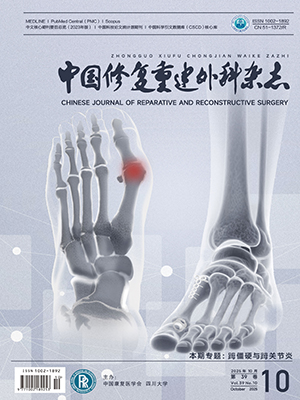| 1. |
Jung JJ, Husse B, Rimmbach C, et al. Programming and isolation of highly pure physiologically and pharmacologically functional sinus-nodal bodies from pluripotent stem cells. Stem Cell Reports, 2014, 2(5): 592-605.
|
| 2. |
Takahashi K, Yamanaka S. Induction of pluripotent stem cells from mouse embryonic and adult fibroblast cultures by defined factors. Cell, 2006, 126(4): 663-676.
|
| 3. |
Huangfu D, Osafune K, Maehr R, et al. Induction of pluripotent stem cells from primary human fibroblasts with only Oct4 and Sox2. Nat Biotechnol, 2008, 26(11): 1269-1275.
|
| 4. |
邹刚, 李豫皖, 金瑛, 等. TGF-β1 联合 VEGF 对人羊膜间充质干细胞向韧带成纤维细胞体外分化作用的研究. 中国修复重建外科杂志, 2017, 31(5): 582-593.
|
| 5. |
周兰庭, 冯雁婷, 戴景兴, 等. miRNA 调控脂肪干细胞分化的研究进展. 中国修复重建外科杂志, 2017, 31(12): 1506-1511.
|
| 6. |
Zwi L, Caspi O, Arbel G, et al. Cardiomyocyte differentiation of human induced pluripotent stem cells. Circulation, 2009, 120(15): 1513-1523.
|
| 7. |
Nicaise AM, Banda E, Guzzo RM, et al. HiPS-derived neural progenitor cells from PPMS patients reveal defect in myelin injury response. Exp Neurol, 2017, 288: 114-121.
|
| 8. |
Lian X, Zhang J, Azarin SM, et al. Directed cardiomyocyte differentiation from human pluripotent stem cells by modulating Wnt/β-catenin signaling under fully defined conditions. Nat Protoc, 2013, 8(1): 162-175.
|
| 9. |
Kapoor N, Liang W, Marbán E, et al. Direct conversion of quiescent cardiomyocytes to pacemaker cells by expression of Tbx18. Nat Biotechnol, 2013, 31(1): 54-62.
|
| 10. |
Wiese C, Grieskamp T, Airik R, et al. Formation of the sinus node head and differentiation of sinus node myocardium are independently regulated by Tbx18 and Tbx3. Circ Res, 2009, 104(3): 388-397.
|
| 11. |
Li Y, Zhang Q, Yin X, et al. Generation of HiPSCs from mouse fibroblasts with a single gene, Oct4, and small molecules. Cell Res, 2011, 21(1): 196-204.
|
| 12. |
Wei X, Chen Y, Xu Y, et al. Small molecule compound induces chromatin de-condensation and facilitates induced pluripotent stem cell generation. J Mol Cell Biol, 2014, 6(5): 409-420.
|
| 13. |
Stadtfeld M, Nagaya M, Utikal J, et al. Induced pluripotent stem cells generated without viral integration. Science, 2008, 322(5903): 945-949.
|
| 14. |
Okita K, Nakagawa M, Hyenjong H, et al. Generation of mouse induced pluripotent stem cells without viral vectors. Science, 2008, 322(5903): 949-953.
|
| 15. |
Warren L, Manos PD, Ahfeldt T, et al. Highly efficient reprogramming to pluripotency and directed differentiation of human cells with synthetic modified mRNA. Cell Stem Cell, 2010, 7(5): 618-630.
|
| 16. |
Miyoshi N, Ishii H, Nagano H, et al. Reprogramming of mouse and human cells to pluripotency using mature microRNAs. Cell Stem Cell, 2011, 8(6): 633-638.
|
| 17. |
Lin T, Ambasudhan R, Yuan X, et al. A chemical platform for improved induction of human HiPSCs. Nat Methods, 2009, 6(11): 805-808.
|
| 18. |
Esteban MA, Wang T, Qin B, et al. Vitamin C enhances the generation of mouse and human induced pluripotent stem cells. Cell Stem Cell, 2010, 6(1): 71-79.
|
| 19. |
Hoogaars WM, Engel A, Brons JF, et al. Tbx3 controls the sinoatrial node gene program and imposes pacemaker function on the atria. Genes Dev, 2007, 21(9): 1098-1112.
|
| 20. |
Wiese C, Grieskamp T, Airik R, et al. Formation of the sinus node head and differentiation of sinus node myocardium are independently regulated by Tbx18 and Tbx3. Circ Res, 2009, 104(3): 388-397.
|




